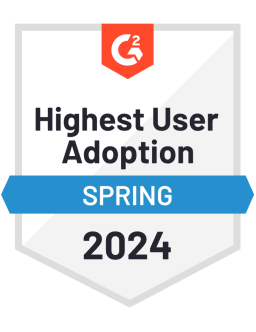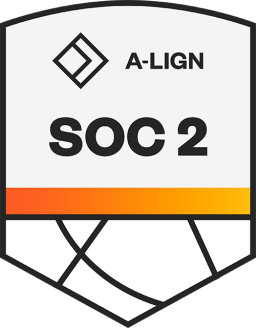If you are like a lot of customer experience (CX) professionals, you know there are customer touchpoints along the journey that need improvement — but revamping the whole customer journey can feel like a massive undertaking.
One way to approach such a task is by breaking it down into smaller pieces. Instead of addressing the entire customer journey at once, choose just a few customer touchpoints to start with. Use your customer journey maps to understand which touchpoints customers experience as they interact with your brand. For each touchpoint, follow these four steps for improvement:
Identify what goal the customer is trying to accomplish
Empathize with what the customer may be feeling or thinking in that moment
Brainstorm potential ways to enhance this touchpoint
Define which KPI (key performance indicator) would be influenced by any improvements
By tackling one customer touchpoint at a time, you will be able to make more progress than if you had tried to overhaul the entire customer journey in one go.
Here are some examples of how to use the four steps above to analyze and improve customer touchpoints:
Example 1: Shopping online
In this example, the customer touchpoint is a webpage on your e-commerce footwear site: a product sizing chart. The customer's goal while they browse this page is to find out which size shoe will fit them best. At this moment, he may be feeling unsure or apprehensive about ordering the wrong size.
With their goals and feelings in mind, what could you do to improve this touchpoint? One option is to proactively engage this customer with a web chat, asking them if they would like some assistance finding the correct shoe size. Considering that more than half of online shoppers are likely to abandon a purchase if they can't find a quick answer to their questions, proactively providing those answers can have a huge impact. From a KPI standpoint, your website's conversion rate stands to improve considerably.
Example 2: Using live chat on a mobile app
Let's say this customer ordered a pair of shoes from your website, and the next day they are wondering when they will arrive. They open your mobile app, click a button marked, "Ask a Question," and a live chat opens. Their goal is to find out exactly where their new shoes are and when they should expect delivery. Since they are using a mobile app, it's logical to assume they are on the go, and want a quick, easy answer. And since they are presented with a messaging interface, they are expecting to be able to converse with your brand in the same way they text with their friends or family.
With these assumptions in mind, how could you enhance this customer touch point? First, make sure your app supports natural language; meaning that customers are able to engage in a two-way dialog with a chatbot who can understand their intent and answer their questions, much in the same way a human agent would. Answers should also be personalized to each individual — after all, this customer is not asking about your typical shipping times, they are asking when their shoes will be delivered. They didn't ask a generic question, so it's best to avoid providing a generic answer.
Improving on this experience further, you could consider offering this functionality through Facebook Messenger or SMS, allowing your customers to communicate with you without having to download another app. What's more, you could also offer more communication options from within the chat interface. For instance, you could enable one-click escalation to a voice or video call with an agent who already has all the context about the customer's identity, history, and current needs.
Such improvements would affect several KPIs, including:
Better customer satisfaction, resulting from finding quick, easy answers to their questions
Lower call volumes and shorter hold times, because simple, repetitive questions can be answered using chatbots
Higher agent engagement, since they have the time and tools needed to better serve customers
Example 3: Calling the contact center
The customer's shoes were delivered, but after they opened them, they decided they didn’t like the style after all. They call your 800 number to talk to an agent. Their goal is to find out if they can exchange the shoes for a different style. At this moment, they are probably feeling a number of emotions: they are disappointed they didn't like the shoes as much as they thought they would, they are dreading having to wait on hold and explain their situation to however many different customer service people, and they are worried the exchange process is going to be painful.
Knowing what they want to achieve and how they are feeling at this touch point, how could you make this experience better? First, you could speed up the issue’s resolution by supplying in-the-moment guidance and smarter data entry tools for your agents. Once the agent identifies which customer they're speaking with, they should be able to quickly confirm what product he purchased and why he wants to exchange it. Their CRM system could provide a suggested next best action — in this case, an email to the customer containing a return label for the shoes. The email could even be pre-filled with all the customer's pertinent information, allowing the agent to simply review and send.
People often dread calling customer service, so by making the process far less painful than they expected, you build customer loyalty. In addition, according to Aberdeen Research, the average agent spends 15% of their time hunting through enterprise systems for the data they need to resolve customer issues. For a 300-seat contact center, that can add $1.57 million in unnecessary costs annually. Providing all the information and guidance agents need at their fingertips can reduce your costs and allow agents to focus on providing the best possible service to each customer.
Using the four steps and the examples provided here, you will be able to make meaningful and manageable improvements to your customer journey by addressing customer touchpoints, one at a time.
Emplifi's unified CX platform provides brands with the tools they need to eliminate friction and enhance experiences across all customer touchpoints, at every step of the customer journey. To learn more about how our technology can play a major role in elevating your customer experience, schedule a live demo today.
Editor's Note: This article was originally published on astutesolutions.com. Any statistics or statements included in this article were current at the time of original publication.
























